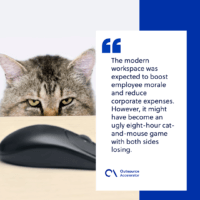A cat-and-mouse game
We live in the age of the so-called modern workplace, but corporations don’t know how to measure what goes on in these workplaces.
Employees of the knowledge economy are paid for their intellectual contribution instead of the number of widgets produced. Unfortunately, this new paradigm of productivity is really hard to objectively measure. As a result, some firms resort to monitoring software that attempts to track productivity via ambiguous metrics, such as mouse movement.
Financial services firm Wells Fargo recently fired several employees for using ‘mouse jigglers’ that simulate computer activity to create the impression of active work. A dozen people were in on the jig (pun intended), including six employees who were fired and a worker who voluntarily resigned.
The modern workspace was expected to boost employee morale and reduce corporate expenses. However, it might have become an ugly eight-hour cat-and-mouse game with both sides losing.
Measuring productivity
On average, studies suggest that most employees allot at least four out of the eight office hours to hyperfocused work. The rest are devoted to lighter tasks and various administrative assignments. And, as much as these corporations don’t want to admit, a few hours are devoted to idle time and goofing off.
In the old workplace, employees rushed to their stations before their shifts started. Now that employees can work from home, idle time is devoted to household chores and helping the kids.
Today, instead of draconian factory attendance punch cards, workers start when they feel like it, easing into it over breakfast and coffee – and who knows what they’re really doing on the Zoom calls. The landscape has changed. And productivity is now not so easy to assess.
No shortcuts
The new workplace settings have pushed corporations to devise proxy forms of oversight. However, remote monitoring tools are just a lazy attempt to quantify productivity.
Actual monitoring requires critical thinking. Good managers should be able to determine which output was rushed and which was meticulously put together. Unfortunately, this is qualitative in nature, not objective.
A manager’s job is not to catch employees ‘not doing work.’ Rather, their job is to clearly communicate project expectations, monitor progress without overstepping, support, and thoroughly analyze the output.
Modern work arrangements don’t allow for piecemeal analysis of productivity. Rather, corporations should revisit and reiterate the core principles of the commercial – and social – contract between them and their employees, which hinges on trust and accountability.
Instead of investing in tyrannical work monitoring tools, why not hire managers who know how to engage, lead, and motivate employees? Mouse jigglers, screen monitoring software, and other related tools are just new forms of micromanagement that corporations should stay away from.
The question for your business
How are you managing your employees?
Read more thought leadership articles here:




 Independent
Independent





















